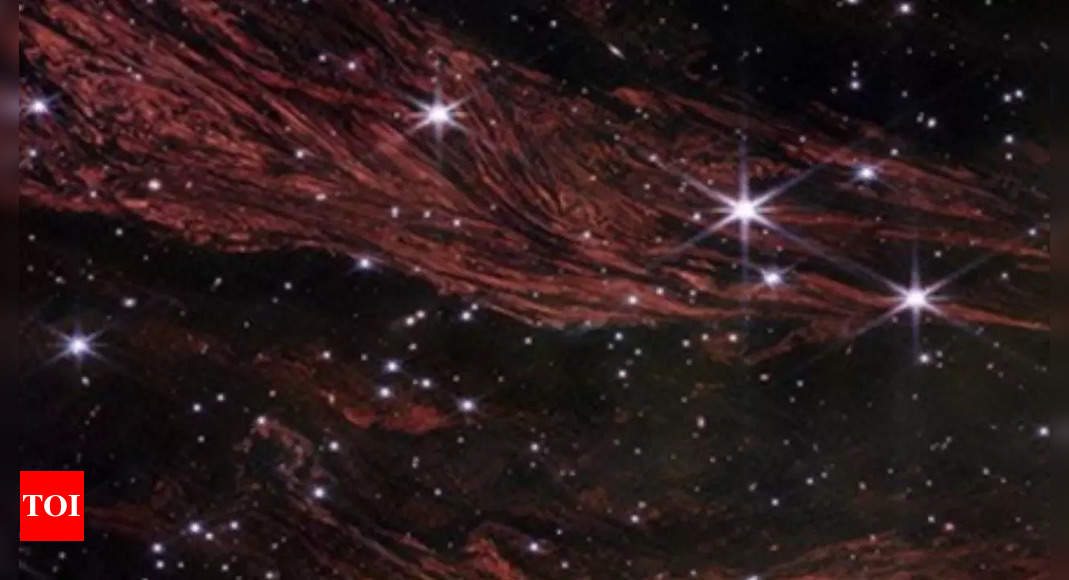NASA‘s James Webb Space Telescope has captured the Cassiopeia A supernova remnant, which bears wood grain-like patterns resulting from the explosion of stars. Advanced infrared capabilities with Webb have brought views of interstellar dust and 3D structures of cosmic material that have never been seen before. New images will now give scientists new insights into complex processes in space, including star evolution and dust dynamics. Future plans to study with Webb’s instruments will open up even more mysteries in the universe – how the life echoes are produced, but also, the cycle of life of stars, a transformational moment in space exploration.
NASA’s Webb Telescope captures wood grain-like patterns in cosmic space
NASA’s Webb Telescope, which is equipped with very advanced infrared capabilities, recently caught the glowing echo of this light. These echoes allowed astronomers to take a new, high-quality image of the region around the Cassiopeia-A supernova remnant. The photographs revealed intricate structures that looked like wood grain patterns. This breathtaking image captured dust in cosmic space in unprecedented detail, allowing astronomers to look at the 3D structure of interstellar material with precision they never thought possible.
The new details revealed were referred to by astronomer Jacob Jencson of Caltech as “shocking.” Onionskin-like layers appeared, astronomers noticed, an arrangement that had never been visible before. Light echoes helped researchers see deeply inside those layers and view them in a way no one ever saw them before. Another astronomer, Josh Peek, said, for the first time, astronomers can see what lies within these layers, which was previously hidden.
Webb telescope reveals 3D structure of interstellar dust
The newly captured images reveal tightly packed sheets of interstellar dust, measuring around 400 astronomical units in size. The sheets appear to have been shaped by magnetic fields, and some regions even resemble knots in wood grain. It is a major step forward in the understanding of cosmic dust and the interstellar medium that these formations can be seen in 3D.
Armin Rest, an astronomer, used the term “cosmic CT scan” to describe the observations made by Webb. Similar to how a CT scan helps doctors see inside the human body, Webb’s images help scientists explore the hidden structure of the universe, such as the dense, complex interstellar dust. This is the first major cosmic discovery that lets scientists see parts of the universe’s underlying structure that were not accessible to them before.
Webb and Roman telescopes to explore star evolution and unveil cosmic light echoes
Astronomers are making plans for future studies using Webb’s Mid-Infrared Instrument. They aim to monitor the temporal evolution of the illuminated dust and look for molecular or compositional changes. Such observations could yield even greater insights into the processes occurring within interstellar material and improve our understanding of the life cycle of stars.
Webb captures very rare infrared echoes of light. The process to observe such events involves particular circumstances with a supernova. The future NASA telescope named the Nancy Grace Roman Telescope will further attempt to search for similar instances within the universe. It has the ability to completely transform how humanity sees death by star and how dynamics take place within the space itself. According to NASA Administrator Bill Nelson, who called this one of the telescope’s groundbreaking feats, “every image reveals the majesty of the universe and human ingenuity.” In this discovery, light echoes remind us of the truly long-lasting journey of light across cosmology, a peep into the hidden structure of the universe, and just how far technology has taken man to fathom the mystifying world of space.
Also Read | How long will Sunita Williams stay in space? NASA astronauts return to Earth delayed to March 2025




